I, Maria Bartholdi, promise to you, beloved reader (who looks great today, I might add! I love the thing you're doing with your hair) that I am a nice person. I like to make people feel happy, and I love making people laugh. I can often be found knitting hats for my friends or spending hours picking out the perfect birthday card.
But don't let that fool you. Not for a second.
Because once I enter the battlefield, all bets are off.
On the battlefield, I get to be someone different. Someone intense. Someone who's here to turn creatures sideways. Someone who's here to kill you in five turns.
When it comes to Magic, I'm here to smash face.
That's why I'm an aggro player. That's why I play aggro decks. That's why I build them.
But how exactly do you go about building a successful aggressive strategy? It's about a lot more than just throwing a bunch of one- and two-drops into your deck and calling it a day.
I've always believed that to truly understand something, you've got to understand its history. Whether that's why a certain public policy is important, where the chicken in that chicken sandwich you just ordered came from, or how to build a brand-new aggro deck the right way—to look to the future, we must first look to the past.
Jay Schneider's Sligh


a:27:{i:0;O:8:"stdClass":3:{s:9:"card_meta";O:8:"stdClass":2:{s:5:"title";s:12:"Dragon Whelp";s:22:"field_card_image_front";a:0:{}}s:4:"type";s:8:"creature";s:10:"deck_count";s:1:"2";}i:1;O:8:"stdClass":3:{s:9:"card_meta";O:8:"stdClass":2:{s:5:"title";s:17:"Orcish Cannoneers";s:22:"field_card_image_front";a:0:{}}s:4:"type";s:8:"creature";s:10:"deck_count";s:1:"2";}i:2;O:8:"stdClass":3:{s:9:"card_meta";O:8:"stdClass":2:{s:5:"title";s:16:"Brothers of Fire";s:22:"field_card_image_front";a:0:{}}s:4:"type";s:8:"creature";s:10:"deck_count";s:1:"2";}i:3;O:8:"stdClass":3:{s:9:"card_meta";O:8:"stdClass":2:{s:5:"title";s:16:"Orcish Artillery";s:22:"field_card_image_front";a:0:{}}s:4:"type";s:8:"creature";s:10:"deck_count";s:1:"2";}i:4;O:8:"stdClass":3:{s:9:"card_meta";O:8:"stdClass":2:{s:5:"title";s:13:"Ironclaw Orcs";s:22:"field_card_image_front";a:0:{}}s:4:"type";s:8:"creature";s:10:"deck_count";s:1:"4";}i:5;O:8:"stdClass":3:{s:9:"card_meta";O:8:"stdClass":2:{s:5:"title";s:18:"Dwarven Lieutenant";s:22:"field_card_image_front";a:0:{}}s:4:"type";s:8:"creature";s:10:"deck_count";s:1:"3";}i:6;O:8:"stdClass":3:{s:9:"card_meta";O:8:"stdClass":2:{s:5:"title";s:16:"Orcish Librarian";s:22:"field_card_image_front";a:0:{}}s:4:"type";s:8:"creature";s:10:"deck_count";s:1:"2";}i:7;O:8:"stdClass":3:{s:9:"card_meta";O:8:"stdClass":2:{s:5:"title";s:9:"Brass Man";s:22:"field_card_image_front";a:0:{}}s:4:"type";s:8:"creature";s:10:"deck_count";s:1:"4";}i:8;O:8:"stdClass":3:{s:9:"card_meta";O:8:"stdClass":2:{s:5:"title";s:14:"Dwarven Trader";s:22:"field_card_image_front";a:0:{}}s:4:"type";s:8:"creature";s:10:"deck_count";s:1:"2";}i:9;O:8:"stdClass":3:{s:9:"card_meta";O:8:"stdClass":2:{s:5:"title";s:20:"Goblins of the Flarg";s:22:"field_card_image_front";a:0:{}}s:4:"type";s:8:"creature";s:10:"deck_count";s:1:"2";}i:10;O:8:"stdClass":3:{s:9:"card_meta";O:8:"stdClass":2:{s:5:"title";s:10:"Black Vise";s:22:"field_card_image_front";a:0:{}}s:4:"type";s:8:"artifact";s:10:"deck_count";s:1:"1";}i:11;O:8:"stdClass":3:{s:9:"card_meta";O:8:"stdClass":2:{s:5:"title";s:7:"Shatter";s:22:"field_card_image_front";a:0:{}}s:4:"type";s:7:"instant";s:10:"deck_count";s:1:"1";}i:12;O:8:"stdClass":3:{s:9:"card_meta";O:8:"stdClass":2:{s:5:"title";s:8:"Detonate";s:22:"field_card_image_front";a:0:{}}s:4:"type";s:7:"sorcery";s:10:"deck_count";s:1:"1";}i:13;O:8:"stdClass":3:{s:9:"card_meta";O:8:"stdClass":2:{s:5:"title";s:14:"Lightning Bolt";s:22:"field_card_image_front";a:0:{}}s:4:"type";s:7:"instant";s:10:"deck_count";s:1:"4";}i:14;O:8:"stdClass":3:{s:9:"card_meta";O:8:"stdClass":2:{s:5:"title";s:10:"Incinerate";s:22:"field_card_image_front";a:0:{}}s:4:"type";s:7:"instant";s:10:"deck_count";s:1:"4";}i:15;O:8:"stdClass":3:{s:9:"card_meta";O:8:"stdClass":2:{s:5:"title";s:8:"Fireball";s:22:"field_card_image_front";a:0:{}}s:4:"type";s:7:"sorcery";s:10:"deck_count";s:1:"1";}i:16;O:8:"stdClass":3:{s:9:"card_meta";O:8:"stdClass":2:{s:5:"title";s:10:"Immolation";s:22:"field_card_image_front";a:0:{}}s:4:"type";s:11:"enchantment";s:10:"deck_count";s:1:"1";}i:17;O:8:"stdClass":3:{s:9:"card_meta";O:8:"stdClass":2:{s:5:"title";s:10:"Strip Mine";s:22:"field_card_image_front";a:0:{}}s:4:"type";s:4:"land";s:10:"deck_count";s:1:"4";}i:18;O:8:"stdClass":3:{s:9:"card_meta";O:8:"stdClass":2:{s:5:"title";s:16:"Mishra's Factory";s:22:"field_card_image_front";a:0:{}}s:4:"type";s:4:"land";s:10:"deck_count";s:1:"4";}i:19;O:8:"stdClass":3:{s:9:"card_meta";O:8:"stdClass":2:{s:5:"title";s:13:"Dwarven Ruins";s:22:"field_card_image_front";a:0:{}}s:4:"type";s:4:"land";s:10:"deck_count";s:1:"2";}i:20;O:8:"stdClass":3:{s:9:"card_meta";O:8:"stdClass":2:{s:5:"title";s:8:"Mountain";s:22:"field_card_image_front";a:0:{}}s:4:"type";s:4:"land";s:10:"deck_count";s:2:"13";}i:21;O:8:"stdClass":3:{s:9:"card_meta";O:8:"stdClass":2:{s:5:"title";s:9:"Manabarbs";s:22:"field_card_image_front";a:0:{}}s:4:"type";s:11:"enchantment";s:10:"deck_count";i:0;}i:22;O:8:"stdClass":3:{s:9:"card_meta";O:8:"stdClass":2:{s:5:"title";s:14:"Active Volcano";s:22:"field_card_image_front";a:0:{}}s:4:"type";s:7:"instant";s:10:"deck_count";i:0;}i:23;O:8:"stdClass":3:{s:9:"card_meta";O:8:"stdClass":2:{s:5:"title";s:15:"Serrated Arrows";s:22:"field_card_image_front";a:0:{}}s:4:"type";s:8:"artifact";s:10:"deck_count";i:0;}i:24;O:8:"stdClass":3:{s:9:"card_meta";O:8:"stdClass":2:{s:5:"title";s:9:"Meekstone";s:22:"field_card_image_front";a:0:{}}s:4:"type";s:8:"artifact";s:10:"deck_count";i:0;}i:25;O:8:"stdClass":3:{s:9:"card_meta";O:8:"stdClass":2:{s:5:"title";s:9:"Zuran Orb";s:22:"field_card_image_front";a:0:{}}s:4:"type";s:8:"artifact";s:10:"deck_count";i:0;}i:26;O:8:"stdClass":3:{s:9:"card_meta";O:8:"stdClass":2:{s:5:"title";s:15:"An-Zerrin Ruins";s:22:"field_card_image_front";a:0:{}}s:4:"type";s:11:"enchantment";s:10:"deck_count";i:0;}}
When you're looking at that list, take a moment. Breathe it in. Appreciate it. You're looking at one of the most important moments in Magic history.
That's Sligh (cue the harp music), the brainchild of renowned deck builder Jay Schneider. He came up with it back in the '90s as a way to combat a bunch of slow, awkwardly built decks that were dominating the format. It was named after player Paul Sligh, who was the first person to pilot it. He came in second with it at a Pro Tour Qualifier in Atlanta in 1996—which, at the time, secured you a spot on the Pro Tour.
No one had ever seen anything like it before, and the deck exploded in popularity. The PTQ tournament organizer famously wrote on an internet message board the week after the event, "I still do not understand how this deck got as far as it did, but it did. The math worked out, I guess!"
Not only was Sligh cheap to build (using commons like Dwarven Trader that had never seen tournament play previously) and able to quickly run away with games, it also introduced the concept of the mana curve.
That's right.
There used to be a time when no one knew what a mana curve was because it hadn't been invented yet.
(The mana curve refers to the balance of cards in your deck and how much they cost to cast. Read more here!)
Sligh's plan was to play a bunch of cheap, aggressive creatures and back them up with burn spells that could either kill potential blockers or go directly to the opponent's face. The mana curve concept was integral to the deck's success because it helped smooth out draws by giving it the best chance of drawing an ideal opening hand followed up with relevant cards.
Nowadays, this concept seems obvious to us. But back then, the top decks of the day hadn't considered this logic. Players often put the best cards into their decks without thinking about optimizing their draws or positioning themselves to best sequence their spells.
The reason all of this is important is because we still use the same basic deck-building concepts to build successful aggressive decks today—concepts Jay Schneider pioneered when building Sligh.
So, here's my patented (they're not patented) Five Steps to Building an Aggro Deck. Enjoy!
Step One: Color Me Aggro
Before we decide what cards to put in our deck, we need to decide on our colors.
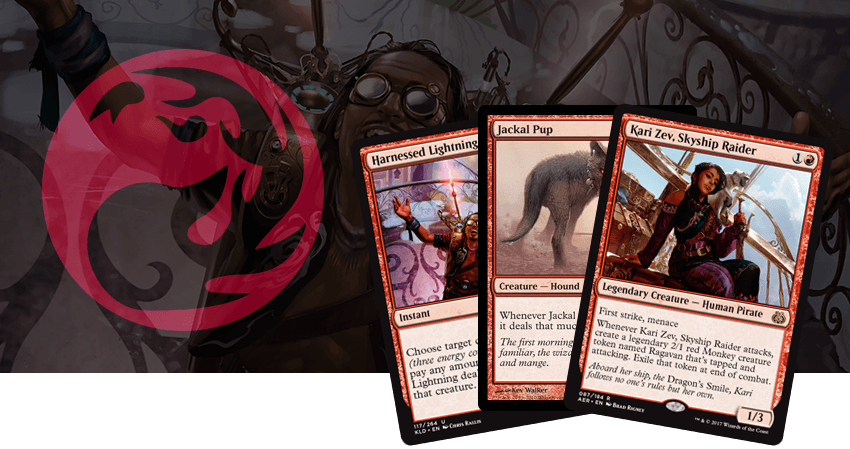
Red is the color most traditionally associated with aggressive strategies in Magic; it has small powerful creatures and access to direct damage. In fact, red is so good at aggro it doesn't even need to be paired with another color. Mono-red (also known as "Red Deck Wins") is an archetype we regularly see pop up across all formats. Need proof? Play pretty much any cube! Red does not, however, have a monopoly on the archetype.
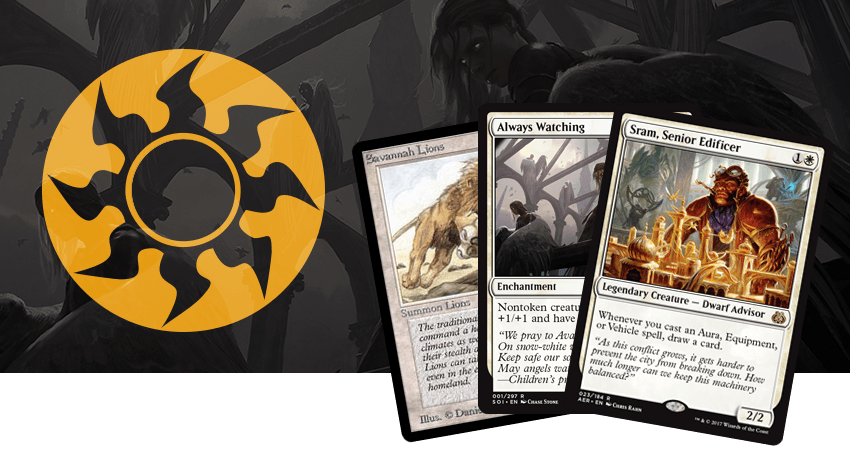
The second most popular color option for aggressive decks is white, which also can be played alone. We see this deck-building strategy used in what we call "White Weenie" decks. These decks play lots of small creatures (sometimes making use of token or "go-wide" strategies), and use pump spells, board wipes, or exile effects to help out in the late game. In fact, the first ever true "aggro deck" was a White Weenie deck played by Tom Chanpheng in the 1996 World Championship.

Black is interesting because it can be both an aggressive color or a controlling one. Black-red is a popular aggro color combination, and was back-breaking in Return to Ravnica Draft thanks to the aggro player's dream mechanic: unleash. Black gives access to small creatures such as Zombies, but more importantly, it gives you a ton of removal. After all, your creatures often need a little support to kill blockers! It's also an aggro all-star when paired with white and red. (We'll chat more about Mardu later in this article.)
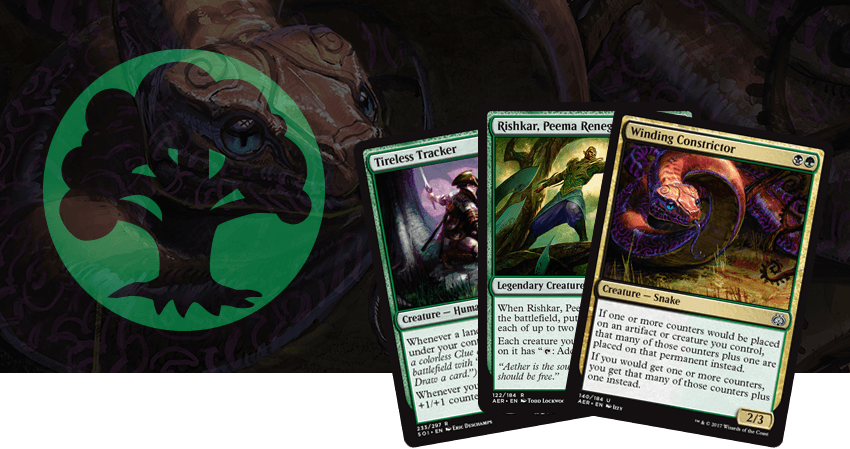
Like black, green is a good support color in aggro decks. Green-White Humans recently brought Craig Wescoe to the Top 32 at Grand Prix Denver and was an excellent example of how white and green can work together to create a cohesive aggressive strategy. Traditionally, green helps out by providing creatures with solid power/toughness stats and +1/+1 counters. Speaking of counters, I think a certain Winding Constrictor might be willing to help out with that in our current Standard format . . . ? (More about this powerful lil' snek later.)
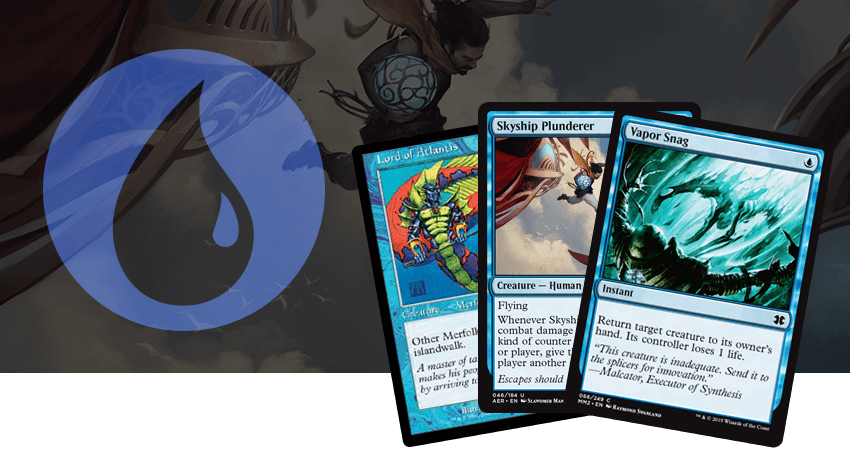
Blue?! That's right. Even an aggro player's worst nightmare can sometimes be their best friend. Blue can often be found helping out aggro strategies through the use of tempo. (Again, we'll talk more about that later!)
If you've played even the smallest amount of Modern, you've come across a mono-blue deck that's 100% aggro: Merfolk. Tiny, cheap creatures attacking for lots of damage thanks to cards like Lord of Atlantis? Sounds pretty aggro to me! In fact, blue was repping the aggro life not too long ago in Standard thanks to Mono-Blue Devotion. Blue-Black Faeries was my favorite archetype to draft in Modern Masters and employed a fantastic tempo/aggro strategy.
Step Two: Build Your Army
After you've decided on your colors, the next thing to think about is which creatures to include. (This is also the most fun part, in my opinion.) Aggressive strategies rely on creatures more heavily than control-based strategies because our goal is to get ahead early and stay ahead. The best way to do that? Low-cost creatures that hit hard and hit fast. We don't want to give our opponent time to set up their game plan before we're able to kill them. Sounds deliciously aggro, doesn't it? It sure does!
In Sligh, there are eight one-mana creatures, which is actually pretty low for an aggro deck. Let's look at one of the most popular aggro decks of the past few months.
Kenji Tsumura's Mardu Vehicles


a:16:{i:0;O:8:"stdClass":3:{s:9:"card_meta";O:8:"stdClass":2:{s:5:"title";s:14:"Heart of Kiran";s:22:"field_card_image_front";a:0:{}}s:4:"type";s:8:"artifact";s:10:"deck_count";s:1:"4";}i:1;O:8:"stdClass":3:{s:9:"card_meta";O:8:"stdClass":2:{s:5:"title";s:21:"Inventor's Apprentice";s:22:"field_card_image_front";a:0:{}}s:4:"type";s:8:"creature";s:10:"deck_count";s:1:"4";}i:2;O:8:"stdClass":3:{s:9:"card_meta";O:8:"stdClass":2:{s:5:"title";s:17:"Thraben Inspector";s:22:"field_card_image_front";a:0:{}}s:4:"type";s:8:"creature";s:10:"deck_count";s:1:"4";}i:3;O:8:"stdClass":3:{s:9:"card_meta";O:8:"stdClass":2:{s:5:"title";s:18:"Toolcraft Exemplar";s:22:"field_card_image_front";a:0:{}}s:4:"type";s:8:"creature";s:10:"deck_count";s:1:"4";}i:4;O:8:"stdClass":3:{s:9:"card_meta";O:8:"stdClass":2:{s:5:"title";s:19:"Scrapheap Scrounger";s:22:"field_card_image_front";a:0:{}}s:4:"type";s:8:"creature";s:10:"deck_count";s:1:"4";}i:5;O:8:"stdClass":3:{s:9:"card_meta";O:8:"stdClass":2:{s:5:"title";s:16:"Veteran Motorist";s:22:"field_card_image_front";a:0:{}}s:4:"type";s:8:"creature";s:10:"deck_count";s:1:"4";}i:6;O:8:"stdClass":3:{s:9:"card_meta";O:8:"stdClass":2:{s:5:"title";s:22:"Depala, Pilot Exemplar";s:22:"field_card_image_front";a:0:{}}s:4:"type";s:8:"creature";s:10:"deck_count";s:1:"4";}i:7;O:8:"stdClass":3:{s:9:"card_meta";O:8:"stdClass":2:{s:5:"title";s:19:"Harnessed Lightning";s:22:"field_card_image_front";a:0:{}}s:4:"type";s:7:"instant";s:10:"deck_count";s:1:"4";}i:8;O:8:"stdClass":3:{s:9:"card_meta";O:8:"stdClass":2:{s:5:"title";s:25:"Unlicensed Disintegration";s:22:"field_card_image_front";a:0:{}}s:4:"type";s:7:"instant";s:10:"deck_count";s:1:"2";}i:9;O:8:"stdClass":3:{s:9:"card_meta";O:8:"stdClass":2:{s:5:"title";s:22:"Aethersphere Harvester";s:22:"field_card_image_front";a:0:{}}s:4:"type";s:8:"artifact";s:10:"deck_count";s:1:"4";}i:10;O:8:"stdClass":3:{s:9:"card_meta";O:8:"stdClass":2:{s:5:"title";s:10:"Aether Hub";s:22:"field_card_image_front";a:0:{}}s:4:"type";s:4:"land";s:10:"deck_count";s:1:"4";}i:11;O:8:"stdClass":3:{s:9:"card_meta";O:8:"stdClass":2:{s:5:"title";s:19:"Concealed Courtyard";s:22:"field_card_image_front";a:0:{}}s:4:"type";s:4:"land";s:10:"deck_count";s:1:"4";}i:12;O:8:"stdClass":3:{s:9:"card_meta";O:8:"stdClass":2:{s:5:"title";s:17:"Inspiring Vantage";s:22:"field_card_image_front";a:0:{}}s:4:"type";s:4:"land";s:10:"deck_count";s:1:"4";}i:13;O:8:"stdClass":3:{s:9:"card_meta";O:8:"stdClass":2:{s:5:"title";s:8:"Mountain";s:22:"field_card_image_front";a:0:{}}s:4:"type";s:4:"land";s:10:"deck_count";s:1:"4";}i:14;O:8:"stdClass":3:{s:9:"card_meta";O:8:"stdClass":2:{s:5:"title";s:6:"Plains";s:22:"field_card_image_front";a:0:{}}s:4:"type";s:4:"land";s:10:"deck_count";s:1:"4";}i:15;O:8:"stdClass":3:{s:9:"card_meta";O:8:"stdClass":2:{s:5:"title";s:17:"Spire of Industry";s:22:"field_card_image_front";a:0:{}}s:4:"type";s:4:"land";s:10:"deck_count";s:1:"2";}}
Mardu Vehicles has thirteen one-mana creatures, eight two-mana creatures, and four three-mana creatures—which is where the creature curve stops.
"But Maria, couldn't we include this super awesome six-mana Dragon in our deck?"
"No, we couldn't."
"But . . . it's super awesome."
"GET OFF MY LAWN, KID!"
It's time for two important aggro buzz terms: mana efficiency and tempo advantage.
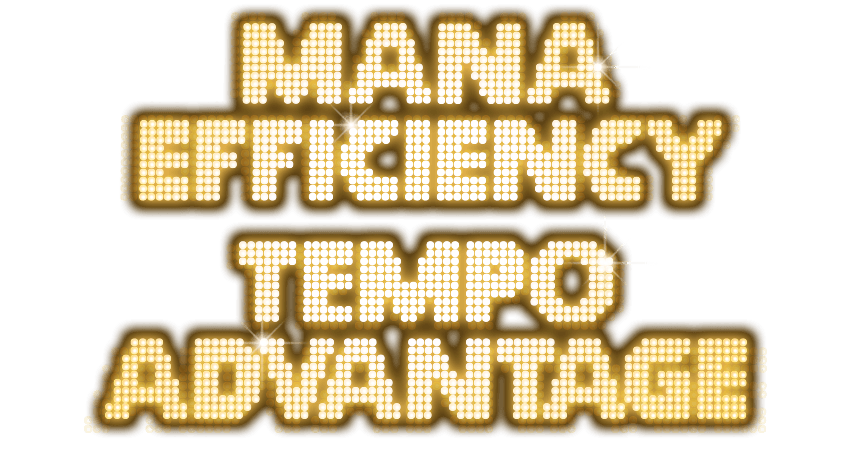
Part of the success of aggressive strategies comes from mana efficiency. For every card in your deck, choose the most cost-effective option available. While a six-mana 5/5 flier might be awesome, it takes too long to be able to cast (hopefully the game is over by turn six) and isn't the right tool for our job. We do want to be dealing a lot of damage (and a 5/5 hits hard), but we want to do it quickly—and hopefully spend less mana to cast our threats than our opponent does to answer them (and vice versa). This gives us what we call "tempo advantage." We'll be two steps ahead of our opponent by casting threats early and often, beating them down to 0, and winning while they still have expensive cards stuck in their hands.
Tempo, mana efficiency, and cost-effective threats are how aggressive decks win the game.
Step Three: Grab Some Reach
No, I'm not talking about Giant Spider here; I'm talking about how aggro decks win even if their opponent manages to stick some big blockers or stabilize. Getting your opponent to 1 life isn't enough to win. As the saying goes: one is not zero. This is the second most important thing to think about when building your aggro deck.
The most straightforward example of a card with "reach" is Lightning Bolt. You can use it to kill your opponent's blockers, or you can hit their life total for 3 if that's a more effective path to victory. Sligh's list had four copies of Strip Mine, which, while it doesn't interact with an opponent's life total or creatures, does disrupt them in another way—by destroying their lands. An effect like that isn't always what you want in an aggro deck, but knowing your options is a good starting point.
Mardu Vehicles runs Unlicensed Disintegration, which not only destroys a creature, but also goes to the face for 3 if you control an artifact. A deck that is near and dear to my heart (it helped me to my first Grand Prix Day Two) was a red-white aggro deck with a few interesting examples of reach.
Tom Ross's Red-White Humans


a:19:{i:0;O:8:"stdClass":3:{s:9:"card_meta";O:8:"stdClass":2:{s:5:"title";s:19:"Consul's Lieutenant";s:22:"field_card_image_front";a:0:{}}s:4:"type";s:8:"creature";s:10:"deck_count";s:1:"2";}i:1;O:8:"stdClass":3:{s:9:"card_meta";O:8:"stdClass":2:{s:5:"title";s:21:"Anointer of Champions";s:22:"field_card_image_front";a:0:{}}s:4:"type";s:8:"creature";s:10:"deck_count";s:1:"2";}i:2;O:8:"stdClass":3:{s:9:"card_meta";O:8:"stdClass":2:{s:5:"title";s:13:"Dragon Hunter";s:22:"field_card_image_front";a:0:{}}s:4:"type";s:8:"creature";s:10:"deck_count";s:1:"4";}i:3;O:8:"stdClass":3:{s:9:"card_meta";O:8:"stdClass":2:{s:5:"title";s:16:"Expedition Envoy";s:22:"field_card_image_front";a:0:{}}s:4:"type";s:8:"creature";s:10:"deck_count";s:1:"4";}i:4;O:8:"stdClass":3:{s:9:"card_meta";O:8:"stdClass":2:{s:5:"title";s:26:"Knight of the White Orchid";s:22:"field_card_image_front";a:0:{}}s:4:"type";s:8:"creature";s:10:"deck_count";s:1:"4";}i:5;O:8:"stdClass":3:{s:9:"card_meta";O:8:"stdClass":2:{s:5:"title";s:19:"Thalia's Lieutenant";s:22:"field_card_image_front";a:0:{}}s:4:"type";s:8:"creature";s:10:"deck_count";s:1:"4";}i:6;O:8:"stdClass":3:{s:9:"card_meta";O:8:"stdClass":2:{s:5:"title";s:17:"Thraben Inspector";s:22:"field_card_image_front";a:0:{}}s:4:"type";s:8:"creature";s:10:"deck_count";s:1:"4";}i:7;O:8:"stdClass":3:{s:9:"card_meta";O:8:"stdClass":2:{s:5:"title";s:17:"Town Gossipmonger";s:22:"field_card_image_front";a:0:{}}s:4:"type";s:8:"creature";s:10:"deck_count";s:1:"4";}i:8;O:8:"stdClass":3:{s:9:"card_meta";O:8:"stdClass":2:{s:5:"title";s:22:"Kytheon, Hero of Akros";s:22:"field_card_image_front";a:0:{}}s:4:"type";s:8:"creature";s:10:"deck_count";s:1:"3";}i:9;O:8:"stdClass":3:{s:9:"card_meta";O:8:"stdClass":2:{s:5:"title";s:6:"Plains";s:22:"field_card_image_front";a:0:{}}s:4:"type";s:4:"land";s:10:"deck_count";s:2:"14";}i:10;O:8:"stdClass":3:{s:9:"card_meta";O:8:"stdClass":2:{s:5:"title";s:17:"Battlefield Forge";s:22:"field_card_image_front";a:0:{}}s:4:"type";s:4:"land";s:10:"deck_count";s:1:"4";}i:11;O:8:"stdClass":3:{s:9:"card_meta";O:8:"stdClass":2:{s:5:"title";s:15:"Always Watching";s:22:"field_card_image_front";a:0:{}}s:4:"type";s:11:"enchantment";s:10:"deck_count";s:1:"4";}i:12;O:8:"stdClass":3:{s:9:"card_meta";O:8:"stdClass":2:{s:5:"title";s:12:"Gryff's Boon";s:22:"field_card_image_front";a:0:{}}s:4:"type";s:11:"enchantment";s:10:"deck_count";s:1:"3";}i:13;O:8:"stdClass":3:{s:9:"card_meta";O:8:"stdClass":2:{s:5:"title";s:20:"Declaration in Stone";s:22:"field_card_image_front";a:0:{}}s:4:"type";s:7:"sorcery";s:10:"deck_count";s:1:"4";}i:14;O:8:"stdClass":3:{s:9:"card_meta";O:8:"stdClass":2:{s:5:"title";s:23:"Hanweir Militia Captain";s:22:"field_card_image_front";a:0:{}}s:4:"type";s:8:"creature";s:10:"deck_count";i:0;}i:15;O:8:"stdClass":3:{s:9:"card_meta";O:8:"stdClass":2:{s:5:"title";s:20:"Reckless Bushwhacker";s:22:"field_card_image_front";a:0:{}}s:4:"type";s:8:"creature";s:10:"deck_count";i:0;}i:16;O:8:"stdClass":3:{s:9:"card_meta";O:8:"stdClass":2:{s:5:"title";s:8:"Silkwrap";s:22:"field_card_image_front";a:0:{}}s:4:"type";s:11:"enchantment";s:10:"deck_count";i:0;}i:17;O:8:"stdClass":3:{s:9:"card_meta";O:8:"stdClass":2:{s:5:"title";s:12:"Stasis Snare";s:22:"field_card_image_front";a:0:{}}s:4:"type";s:11:"enchantment";s:10:"deck_count";i:0;}i:18;O:8:"stdClass":3:{s:9:"card_meta";O:8:"stdClass":2:{s:5:"title";s:13:"Needle Spires";s:22:"field_card_image_front";a:0:{}}s:4:"type";s:4:"land";s:10:"deck_count";i:0;}}
I want to draw your attention to the lands. See those copies of Needle Spires in the sideboard? If you found yourself playing someone with a control deck (cards like Languish and Radiant Flames were our enemies), you could board into Needle Spires. You had reach by being able to activate your creature land and keep on attacking. You'll also see copies of Gideon, Ally of Zendikar (planeswalkers are great examples of reach) as well as Always Watching, an enchantment that gave your team +1/+1 and vigilance, keeping them relevant even if your opponent managed to play some big blockers. Consider what cards you might include that are both mana efficient and grant late-game reach.
Step Four: Give it a Game Plan
One of the superpowers of aggressive decks is that they're so gosh-darn consistent. That's because after lots of science (aka deck-building sessions), the best players and deck builders have realized that the majority of cards in an aggro deck should be focused on one thing: killing the opponent quickly. There's no room for messing about in an aggro deck by playing expensive draw spells or counterspells; we have to keep our eyes on the prize. Our priority is not our life total; it's eliminating that of our opponents. Be ruthless about what you keep in and what you cut. If it doesn't help kill the opponent, it's out.
Take a look at this Black-Green Aggro list that's currently heating up Standard.
Steven Dykman's Black-Green Aggro


a:22:{i:0;O:8:"stdClass":3:{s:9:"card_meta";O:8:"stdClass":2:{s:5:"title";s:18:"Verdurous Gearhulk";s:22:"field_card_image_front";a:0:{}}s:4:"type";s:8:"creature";s:10:"deck_count";s:1:"2";}i:1;O:8:"stdClass":3:{s:9:"card_meta";O:8:"stdClass":2:{s:5:"title";s:16:"Walking Ballista";s:22:"field_card_image_front";a:0:{}}s:4:"type";s:8:"creature";s:10:"deck_count";s:1:"3";}i:2;O:8:"stdClass":3:{s:9:"card_meta";O:8:"stdClass":2:{s:5:"title";s:21:"Glint-Sleeve Siphoner";s:22:"field_card_image_front";a:0:{}}s:4:"type";s:8:"creature";s:10:"deck_count";s:1:"4";}i:3;O:8:"stdClass":3:{s:9:"card_meta";O:8:"stdClass":2:{s:5:"title";s:22:"Servant of the Conduit";s:22:"field_card_image_front";a:0:{}}s:4:"type";s:8:"creature";s:10:"deck_count";s:1:"4";}i:4;O:8:"stdClass":3:{s:9:"card_meta";O:8:"stdClass":2:{s:5:"title";s:16:"Tireless Tracker";s:22:"field_card_image_front";a:0:{}}s:4:"type";s:8:"creature";s:10:"deck_count";s:1:"3";}i:5;O:8:"stdClass":3:{s:9:"card_meta";O:8:"stdClass":2:{s:5:"title";s:19:"Winding Constrictor";s:22:"field_card_image_front";a:0:{}}s:4:"type";s:8:"creature";s:10:"deck_count";s:1:"4";}i:6;O:8:"stdClass":3:{s:9:"card_meta";O:8:"stdClass":2:{s:5:"title";s:24:"Kalitas, Traitor of Ghet";s:22:"field_card_image_front";a:0:{}}s:4:"type";s:8:"creature";s:10:"deck_count";s:1:"2";}i:7;O:8:"stdClass":3:{s:9:"card_meta";O:8:"stdClass":2:{s:5:"title";s:23:"Rishkar, Peema Renegade";s:22:"field_card_image_front";a:0:{}}s:4:"type";s:8:"creature";s:10:"deck_count";s:1:"3";}i:8;O:8:"stdClass":3:{s:9:"card_meta";O:8:"stdClass":2:{s:5:"title";s:24:"Nissa, Voice of Zendikar";s:22:"field_card_image_front";a:0:{}}s:4:"type";s:12:"planeswalker";s:10:"deck_count";s:1:"2";}i:9;O:8:"stdClass":3:{s:9:"card_meta";O:8:"stdClass":2:{s:5:"title";s:6:"Forest";s:22:"field_card_image_front";a:0:{}}s:4:"type";s:4:"land";s:10:"deck_count";s:1:"5";}i:10;O:8:"stdClass":3:{s:9:"card_meta";O:8:"stdClass":2:{s:5:"title";s:5:"Swamp";s:22:"field_card_image_front";a:0:{}}s:4:"type";s:4:"land";s:10:"deck_count";s:1:"7";}i:11;O:8:"stdClass":3:{s:9:"card_meta";O:8:"stdClass":2:{s:5:"title";s:10:"Aether Hub";s:22:"field_card_image_front";a:0:{}}s:4:"type";s:4:"land";s:10:"deck_count";s:1:"4";}i:12;O:8:"stdClass":3:{s:9:"card_meta";O:8:"stdClass":2:{s:5:"title";s:14:"Blooming Marsh";s:22:"field_card_image_front";a:0:{}}s:4:"type";s:4:"land";s:10:"deck_count";s:1:"4";}i:13;O:8:"stdClass":3:{s:9:"card_meta";O:8:"stdClass":2:{s:5:"title";s:16:"Hissing Quagmire";s:22:"field_card_image_front";a:0:{}}s:4:"type";s:4:"land";s:10:"deck_count";s:1:"4";}i:14;O:8:"stdClass":3:{s:9:"card_meta";O:8:"stdClass":2:{s:5:"title";s:22:"Aethersphere Harvester";s:22:"field_card_image_front";a:0:{}}s:4:"type";s:8:"artifact";s:10:"deck_count";s:1:"3";}i:15;O:8:"stdClass":3:{s:9:"card_meta";O:8:"stdClass":2:{s:5:"title";s:10:"Fatal Push";s:22:"field_card_image_front";a:0:{}}s:4:"type";s:7:"instant";s:10:"deck_count";s:1:"3";}i:16;O:8:"stdClass":3:{s:9:"card_meta";O:8:"stdClass":2:{s:5:"title";s:17:"Grasp of Darkness";s:22:"field_card_image_front";a:0:{}}s:4:"type";s:7:"instant";s:10:"deck_count";s:1:"3";}i:17;O:8:"stdClass":3:{s:9:"card_meta";O:8:"stdClass":2:{s:5:"title";s:6:"Murder";s:22:"field_card_image_front";a:0:{}}s:4:"type";s:7:"instant";s:10:"deck_count";i:0;}i:18;O:8:"stdClass":3:{s:9:"card_meta";O:8:"stdClass":2:{s:5:"title";s:13:"Natural State";s:22:"field_card_image_front";a:0:{}}s:4:"type";s:7:"instant";s:10:"deck_count";i:0;}i:19;O:8:"stdClass":3:{s:9:"card_meta";O:8:"stdClass":2:{s:5:"title";s:20:"Ob Nixilis Reignited";s:22:"field_card_image_front";a:0:{}}s:4:"type";s:12:"planeswalker";s:10:"deck_count";i:0;}i:20;O:8:"stdClass":3:{s:9:"card_meta";O:8:"stdClass":2:{s:5:"title";s:11:"Lost Legacy";s:22:"field_card_image_front";a:0:{}}s:4:"type";s:7:"sorcery";s:10:"deck_count";i:0;}i:21;O:8:"stdClass":3:{s:9:"card_meta";O:8:"stdClass":2:{s:5:"title";s:19:"Transgress the Mind";s:22:"field_card_image_front";a:0:{}}s:4:"type";s:7:"sorcery";s:10:"deck_count";i:0;}}
This is the poster child of an aggro deck that has a plan. What's the plan? Loading up your creatures with counters. Nearly every single creature or planeswalker cares about +1/+1 counters. That's synergy!
Be sure to keep consistency in mind when building your aggro masterpiece.
Step Five: It's a Numbers Game
Now that we've picked out our creatures and spells and thought long and hard about our game plan, it's time to refine. How many of each card you put in your deck is super important and is often settled in testing. Thankfully, we have history to look back upon as we make these critical final decisions.
- An aggro deck usually needs 8–12 one-drops and 8–12 two-drops.
- An aggro deck usually plays between 20–23 lands.
- Keep in mind the balance between creatures and spells; you don't want to have too few (or too many) of either.
Get Clobberin'
We've arrived at the moment of truth. You've built your deck. You've tuned it. You've weighed a bunch of decisions and made the correct ones (hopefully!).
Before you play your first real game with the deck, remember: you should be really proud of yourself. Building a deck from the ground up is no small feat. If you're worried you won't get it right on your first try—you're right! You probably won't. But that's okay. Deck building is all about experimentation and failure. Learning from your mistakes will make you a better brewer in the end.
Something you might run into as you play your brand-new aggro deck are people telling you that it's easy to play. It. Is. Not. Playing aggro well is simply a different skill set. It may look deceptively easy because these decks win quickly, but don't let that fool you. Piloting aggressive decks can be just as challenging as piloting controlling decks. You run up against complex decisions like which order to play your spells, when to kill an opponent's creature or let it die in combat, when to run into a counterspell, and when to use your direct damage to attack a life total.
Hold your head high and keep smashing face. Good luck, high five!






